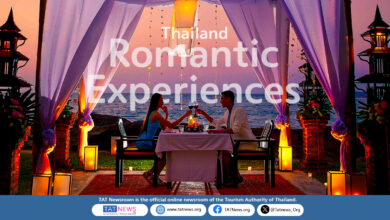His Majesty the Late King Bhumibol Adulyadej will always be revered by the Thai people for his dedication to improving their lives. But it is King Bhumibol’s theories on self-sufficiency that could have the most positive impact. He believed that the economy benefits from balance and moderation and that any long-term goals must take into account environmental balance. Part of his philosophy was the idea that traditional knowledge and wisdom, built up in local communities over centuries, should be used to address modern problems, enhance sustainability and increase the happiness of the people.
[su_slider source=”media: 37681,37662,37677,37648,37638″ link=”image” target=”blank” width=”1000″ height=”800″ autoplay=”0″]To put into practice some of King Bhumibol’s ideas, communities around Thailand are pursuing sustainable ways of living and trying to preserve ancient farming practices, as well as traditional medicines, foods and handicrafts. Many of these communities welcome tourists, who get to enjoy a unique Thai experience while playing their own part in sustaining the kingdom’s culture.
Community-based Tourism (CBT) benefits grass-roots communities by building links between visitors and locals and providing vital income for investment. This means young people from the community feel less pressure to leave and work further afield, so traditional ways of living continue to be passed down through the generations.
A good example of community-based tourism is Ban Rai Kong Khing village in Chiang Mai, which in 2015 won the PATA Tourism InSPIRE Award as the best CBT tourism initiative. The community is a collective enterprise with over 700 families working together and has adopted King Bhumibol’s ideas on sustainable development with the aim of improving the lives of the people in the surrounding areas.
Worried about the use of pesticides, in 2003, the village chief persuaded the farmers to grow organic vegetables for local consumption and neighbourhood exchange to improve the community’s health and well-being. They also started looking at ways to preserve the knowledge of the local people. Now they are inviting tourists in to learn about their lives.
Tourists can get to know more about the village with a one-day or overnight tour. There’s a lot to see and do, with cycling tours around the community being popular. Many people come here to learn to cook local Thai dishes and to make handicrafts guided by community teachers.
But the most fascinating tradition still carried out at the Ban Rai Kong Khing community, and one passed down from father to son, is a unique form of massage known as “Yam Khang.” This is exciting to watch being performed, as it is invigorating to experience for unlike most massages, carried out in scented rooms, accompanied by soothing music, “Yam Khang” takes place in the community courtyard and involves flaming hot coals and masseurs walking on your limbs with heated feet. It’s not an experience for the faint-hearted, but it leaves your body tingling and supple.
The Yam Khang massage starts with the masseur dipping his feet into a blend of healing herbs, sesame, rice whisky, and ginger infused oils before resting it (with an audible sizzle) on a red hot, curved plough blade (the khang) that hangs just above a stove of flaming coals. Then, using a staff for balance, the masseur begins to walk across the client’s body, his toes expertly locating and soothing away blockages and tensions.
Yam Khang takes years to master, and there are currently only a few practitioners around: an example of local expertise attracting tourists by offering an experience unique to the region.
Once supple and stress free, visitors can tour the community’s gardens and see the enterprising ways that crops are grown and pests controlled without the use of fertilisers and pesticides. Produce includes basil, lemongrass, chillies and vegetables all of which are eaten by the community or used in herbal teas and soaps.
This abundance of fresh ingredients means that cooking classes are popular at Ban Rai Kong Khing. Visitors can learn to make khai pam, an egg menu cooked in coconut leaves over a stove and khanom jok, a rice and coconut dessert.
If you don’t feel like undergoing the rigours of a massage, or slaving over a stove, there are plenty of enjoyable cycle rides around the local hills. The Royal Park Rajapruek with its botanical gardens is nearby and don’t miss out on the wooden temple of Wat Intharawat, one of the most charming Lanna style temples in Thailand.
Ban Rai Kong Khing does feel like a community, not a staged show for tourists. Everyone helps with different tasks from farming, working as guides, cooking and raising livestock: they know that by pulling together, so the community will thrive.
So if you’re around Chiang Mai and want to experience a Yam Khang massage or a traditional way of life, you should stop by. Communities; such as, Ban Rai Kong Khing will ensure Thailand remains a fascinating land of infinite variety for centuries to come.
For high-resolution images, please click to visit the TAT Newsroom Photo Library: Attractions – Culture & Activities – Ban Rai Kong Khing community, Chiang Mai.






